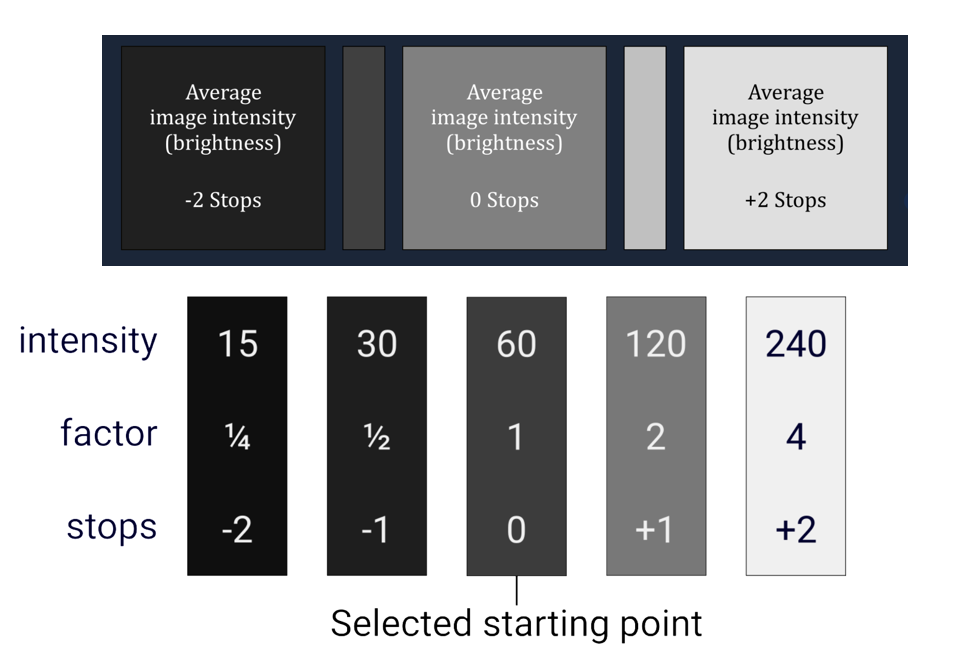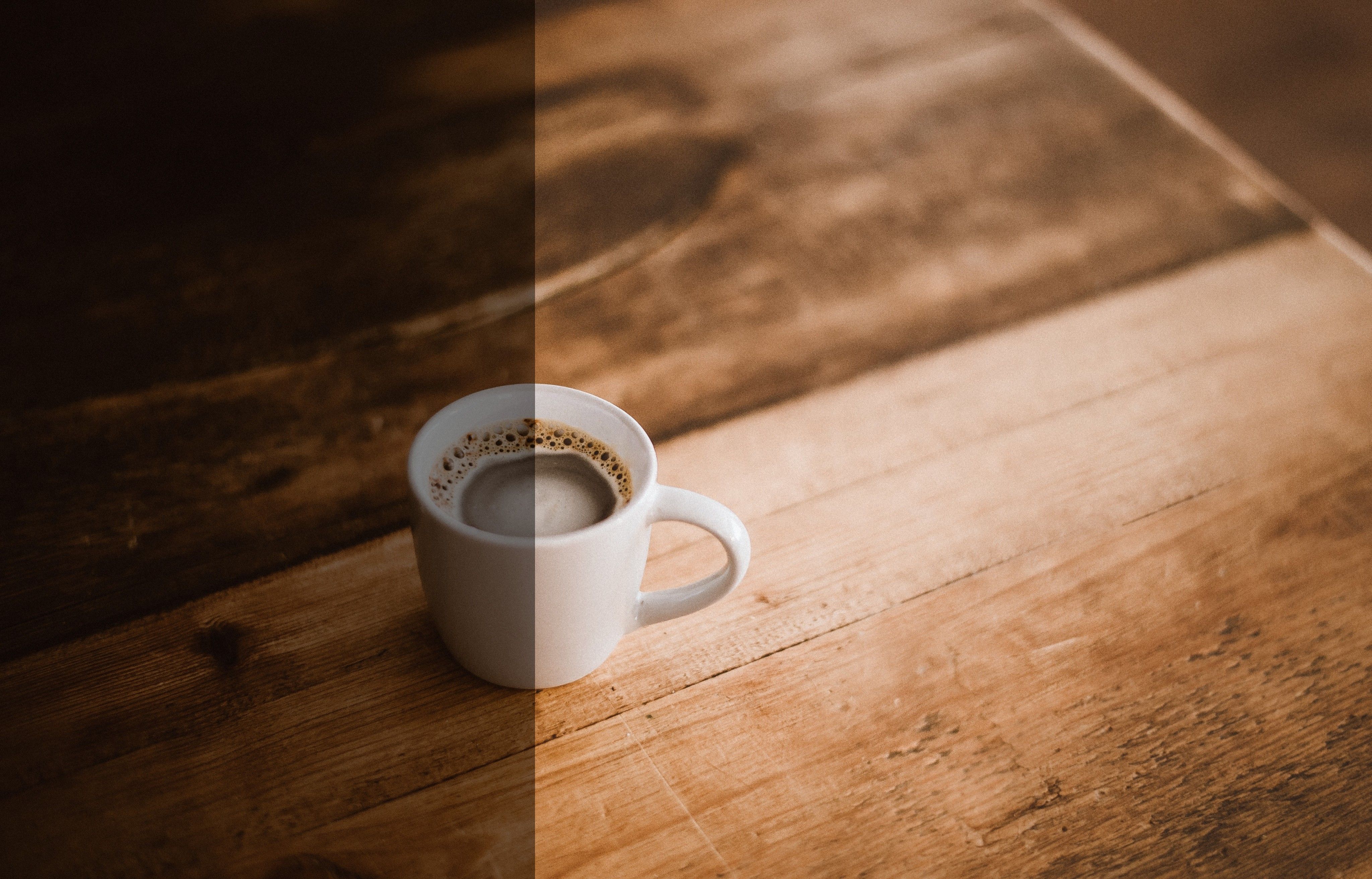Introduction to Stops
Introduction
“Exposure stops”, or just “stops”, is a common term in photography. It is used to describe how much light hits the sensor, or the brightness level of the image, relative to a reference level. This reference level is sometimes referred to as “0 stops”. The brightness of the image is doubled when you “move one stop up” and reduced by half if you “move one stop down”. The total amount of stops a camera has at its disposal is equivalent to the sum of how many times the light intensity can be doubled. The amount of stops available in a sensor relates to the dynamic range of the camera. The Zivid camera has about 23 stops available, which is a key component as to why Zivid is able to achieve good data on shiny objects.
Stops in practice
Let us look at an example.

Let us assume an imaging sensor that reads out brightness value – or contrast – on a scale from 0 to 255, and that we capture images of a wall. By averaging the brightness, or light intensity, from all pixels we get an average image intensity for a given image. Let us assume that in the first image the average intensity reads 60. If the exposure is increased by one stop the intensity will also be doubled to 120. Increasing exposure by two stops will increase the intensity to 240. On the other hand, if the exposure is reduced by 1 stop, the intensity will decrease to 30. Reducing exposure by two stops will decrease the intensity to 15.
An example of different exposure can be seen in the image below, where the left hand side has an exposure of -2 stops relative to the right side.

Tip
Put a piece of paper in the scene of your Zivid camera and open Zivid Studio. Set the Exposure Time to 20000, Projector Brightness to 1.0, and Gain to 1.0. Hover over the image with the mouse cursor and read the values in the color image view in the bottom left corner. Fix your mouse cursor on a pixel and find the Aperture that gives the average RGB value in the range of 60-70. Then, change the Exposure Time to 10000. Observe that the average RGB value is now in the range 30-35 (halving or one stop down). Do the same with Exposure Time set to 40000 and observe an average RGB value in the range of 120-140 (doubling, or one stop up).